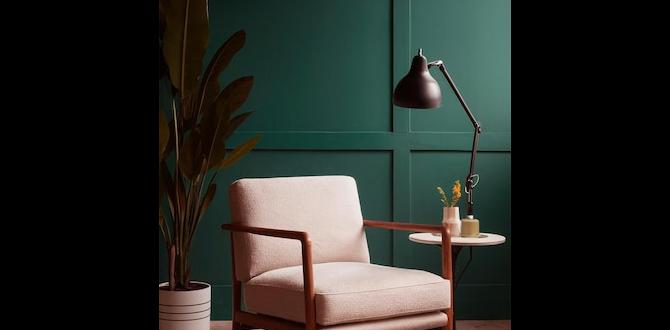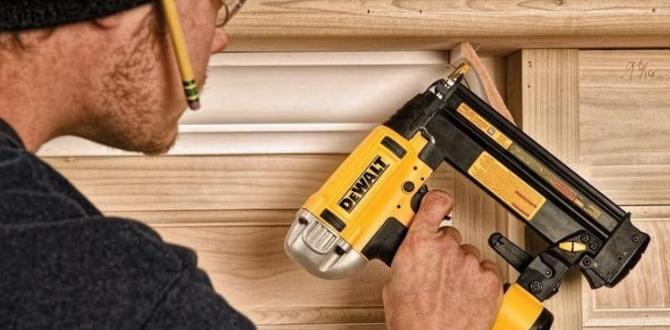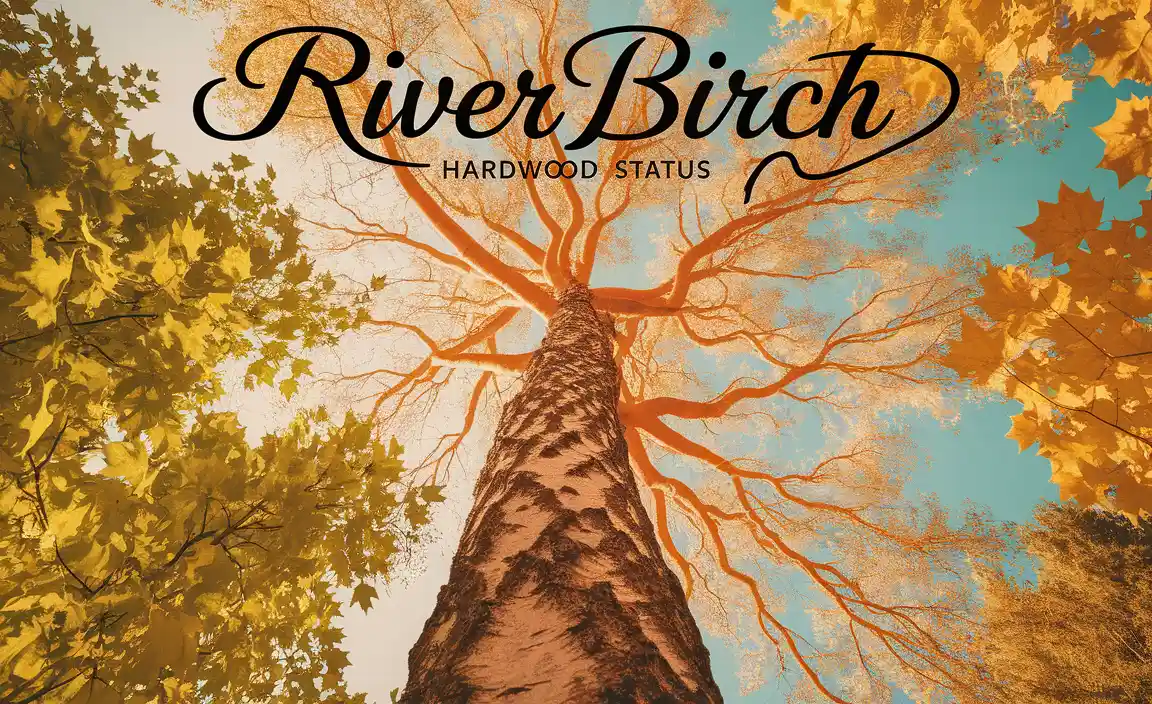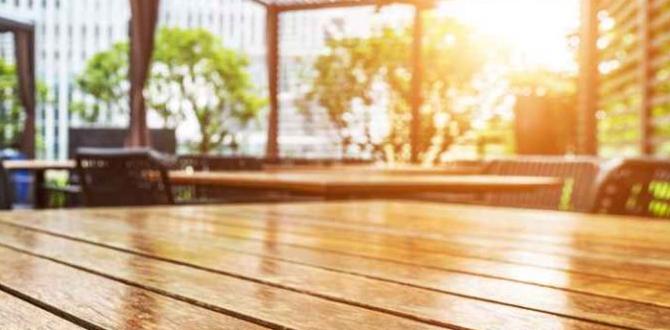Have you ever wondered about the wood used in your favorite furniture? Many people don’t realize that the hardness of wood can make a big difference. One type of wood that often catches attention is ash wood. This wood is not just pretty; it is also strong and durable.
Ash wood hardness is something many carpenters and hobbyists think about. It’s important for creating sturdy furniture and flooring. Did you know that ash wood is often used in sports equipment, like baseball bats? This is because it can handle hard hits without breaking.
Imagine building a table that lasts for decades. You would want to choose the right wood. So, does ash wood measure up to your needs? In this article, we will explore the hardness of ash wood. We’ll also look at how it compares to other types of wood. Get ready to dive into the fascinating world of wood and discover why ash wood might be perfect for you!
Table of Contents
Understanding Ash Wood Hardness: Key Characteristics And Uses

Ash Wood Hardness
Ash wood is known for its impressive hardness, making it a popular choice for furniture and flooring. Its density provides excellent durability against dents and scratches. Did you know that ash wood rates around 1,320 on the Janka hardness scale? This impressive figure shows how strong it is compared to other woods. When choosing materials for your home, considering ash wood can mean investing in long-lasting beauty and strength. Wouldn’t you want your furniture to stand the test of time?Factors Influencing Ash Wood Hardness
Environmental conditions (growth location, climate). Treatment processes and how they affect hardness.Many factors can make ash wood strong or soft. First, where the tree grows matters. Trees in wet areas are usually tougher than those in dry spots. If the climate is warm and sunny, the wood can grow denser, adding to its hardness.
How we treat wood also plays a huge role! Different processes can make it tougher or more mellow. For example, drying the wood can help it stand strong against wear and tear.
| Factor | Influence on Hardness |
|---|---|
| Growth Location | Trees in moist climates tend to be harder. |
| Climate | Warm weather can promote denser wood. |
| Treatment Processes | Proper drying makes wood stronger. |
In the end, ash wood becomes hard depending on its home and how we treat it. It’s a bit like how some kids grow tall and strong while others prefer to stay short and sweet!
Applications of Ash Wood Due to Its Hardness
Common uses in furniture and cabinetry. Usage in sport equipment (e.g., baseball bats).Ash wood is famous for its toughness, making it a favorite for furniture and cabinetry. Its solid structure holds up against scratches and dings, so your chairs and tables can survive family feasts without turning into kindling! Plus, it’s easy to stain and finish, which makes furniture look fabulous.
But wait! It’s not just for your living room. Ash wood shines in sports too. You’ll find it in baseball bats because it can crush fastballs like a champ! Who wouldn’t want a bat that can hit home runs without splintering? Talk about a wood that knows how to play hard!
| Applications of Ash Wood | Details |
|---|---|
| Furniture | Durable and easy to finish |
| Cabinetry | Resists scratches and dents |
| Sport Equipment | Used in baseball bats due to strength |
Comparing Ash Wood Hardness with Other Woods
Comparison with oak, maple, and hickory. Pros and cons of using ash wood versus other hardwoods.Ash wood’s hardness can give it a good workout compared to oak, maple, and hickory. Oak wins for strength, while maple is known for its smooth finish. Hickory? Well, it’s like the superhero of woods—strong and tough! But ash wood has its perks, too. It’s lighter and easier to work with. The downside? It may dent more easily than its tougher buddies. Check out the fun comparison below:
| Wood Type | Hardness (Janka Rating) | Pros | Cons |
|---|---|---|---|
| Ash | 1320 | Lightweight and easy to shape | Softer than some hardwoods |
| Oak | 1290 | Strong and durable | Heavier and bulkier |
| Maple | 1450 | Smooth surface and attractive grain | Can be difficult to stain |
| Hickory | 1820 | Exceptionally tough and shock-resistant | Heavy and hard to work with |
In summary, if you need something easy on the hands, ash wood might be for you. But if you want a tough companion, hickory is ready to rumble!
Care and Maintenance of Ash Wood Products
Best practices for preserving hardness and longevity. Recommended cleaning and conditioning products.To keep ash wood products strong and beautiful, proper care is important. Regularly cleaning helps remove dirt and dust. Use a soft cloth and mild soap for this. Avoid harsh chemicals that can harm the wood. It’s best to condition the wood every few months to keep it hydrated.
- Use a soft cloth to clean.
- Avoid ammonia-based cleaners.
- Condition with natural oils.
These steps help ash wood stay hard and last longer. Remember, a little care goes a long way!
What is the best way to clean ash wood?
To clean ash wood, use a damp cloth with a bit of mild soap. Wipe gently to remove dirt and dust. This protects the wood and keeps it looking good.
How often should I condition ash wood?
Condition ash wood every three to six months. This helps to lock in moisture, giving it a longer life.
Future Trends in Ash Wood Utilization
Sustainable sourcing and its impact on wood quality. Emerging uses and innovations in woodworking techniques.Woodworkers are getting creative with ash wood! As people care more about the environment, sustainable sourcing is becoming super important. This means using ash trees that are grown responsibly without harming nature. With better sourcing, wood quality improves, creating stronger furniture that lasts. Plus, new techniques in woodworking allow for fun, innovative designs. Imagine chairs that are not only comfy but also look like they belong in a spaceship! Who knew wood could be so cool?
| Trends | Description |
|---|---|
| Sustainable Sourcing | Helps improve wood quality and protects the planet. |
| Innovative Techniques | Brings new designs and ideas to life in woodworking. |
Conclusion
In conclusion, ash wood is known for its strength and durability. It ranks moderately in hardness, making it a good choice for furniture and flooring. You can easily work with it for projects. If you’re curious about wood types, consider exploring more about other hardwood options. Understanding wood can help you choose the best materials for your needs!FAQs
What Is The Janka Hardness Rating Of Ash Wood Compared To Other Hardwood Species?The Janka hardness rating measures how tough a wood is. Ash wood is pretty strong, scoring about 1,320 on this scale. This makes it harder than some woods, like pine, but softer than others, like oak. So, ash wood is a good choice for furniture and floors because it’s durable!
How Does The Hardness Of White Ash Differ From That Of Black Ash Wood?White ash wood is harder than black ash wood. This means that white ash is tougher and can resist scratches better. If you hit both types of wood, white ash won’t get damaged as easily. So, white ash is a better choice for things like furniture that need to last a long time.
What Factors Can Influence The Hardness Of Ash Wood During Its Growth And After Harvesting?The hardness of ash wood can be affected by many things. First, the type of soil where the tree grows matters. If the soil has good nutrients, the tree will grow strong. Weather also plays a role; warm and sunny days can help the tree grow harder wood. After harvesting, how we dry and store the wood can change its hardness too. If we don’t dry it properly, it can become softer.
How Does The Hardness Of Ash Wood Impact Its Use In Furniture And Flooring Applications?Ash wood is hard, which makes it very strong. This strength helps our furniture last a long time. When we use ash wood for floors, it can handle a lot of traffic without getting damaged. So, ash wood is a great choice for making furniture and flooring that you can enjoy for years!
Can Treatments Or Finishes Affect The Perceived Hardness Of Ash Wood, And If So, How?Yes, treatments and finishes can change how hard ash wood looks and feels. When we apply a finish, like oil or varnish, it can make the wood shiny and smooth. This can make the wood seem harder, even if it isn’t. Some finishes also protect the wood from scratches, which helps it stay looking good for longer.





